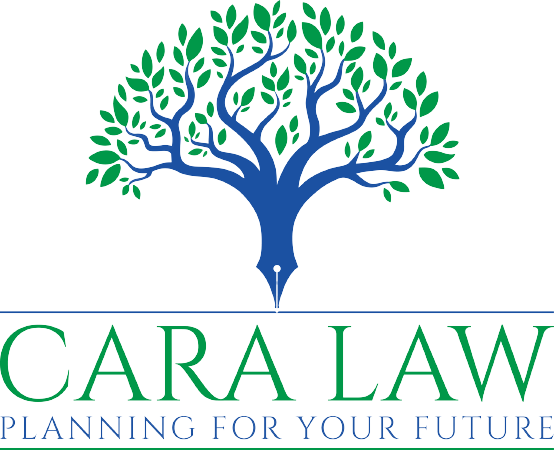After much anticipation, the Treasury Department and the Internal Revenue Service (IRS) have issued final regulations relating to the 10-year required minimum distribution (RMD) rule for people who inherit individual retirement account (IRA) assets.
The newly published guidelines generally reflect what the IRS proposed in 2022, but they bring clarity to several key questions about the rule, which mandates that certain retirement account beneficiaries fully distribute those accounts within a decade of the original account holder’s death.
Regulators have confirmed that most beneficiaries must continue to take RMDs annually throughout the 10 years and fully withdraw the account by the end of the 10th year. As with any tax law change, however, there are exceptions and nuances to the rules that can cause confusion.
Background on the New Rule
The Setting Every Community Up for Retirement Enhancement (SECURE) Act of 2019 made several significant changes related to retirement account RMDs. Additional RMD changes were made in the SECURE 2.0 Act of 2022. These changes have implications not only for account owner RMDs, but also RMDs for retirement account beneficiaries.
Prior to 2020, designated beneficiaries who inherited IRAs, 401(k)s, and other pre-tax contribution plans could withdraw the funds over the course of their lifetime. This allowed for smaller, longer distributions as well as less taxable income and more time to accumulate gains. It was the basis of the so-called “stretch IRA,” an estate planning strategy commonly used with traditional IRAs.
Congress saw this strategy as a loophole and curbed it for most nonspouse beneficiaries in the SECURE Act.
Under the SECURE Act, the general rule is that funds from an inherited retirement account passed to a designated beneficiary must be distributed within 10 years of the original account holder’s death. There are several exceptions to the 10-year rule, however. It doesn’t apply to:
A surviving spouse
Minor children of the original account holder who have not reached the age of 21
Someone who is disabled or chronically ill (as determined in the regulations)
An individual who is not more than 10 years younger than the account owner
A nondesignated beneficiary, such as a charity, estate, or non-see-through trust
Accounts inherited before 2020
The above-mentioned spouse, minor child, or disabled or chronically ill individual not more than 10 years younger than the account owner are defined as eligible designated beneficiaries, which can qualify for lifetime stretch.
However, it wasn’t clear in the original language of the law whether typical designated beneficiaries had to take RMDs over the course of 10 years or whether they could wait until the 10th year to withdraw the full amount.
The IRS issued proposed regulations in 2022 stating that beneficiaries must take RMDs in years 1 – 9 if the original account owner had died after reaching their RMD date. This caused confusion among beneficiaries who didn’t know if they had to take RMDs from an account inherited from someone who died in 2020 or 2021 — or face a penalty for not doing so.
Things got confusing enough that the IRS, in response to public comments, postponed the RMD requirement and waived any penalties for noncompliance with RMDs from inherited accounts for 2021, 2022, 2023, and 2024. With the release of its final regulations, the IRS at long last clarified the issue.
Main Takeaways From the Final IRA 10-Year Rule
Published on July 19, 2024, the final regulations run to 260 pages and explain in detail how the inherited retirement account 10-year-rule works.
The IRS states in a related release that the final regulations generally follow the proposed regulations from 2022.
Crucially, the final regulations answer one of the top questions people have been asking about the 10-year rule: Are RMDs required annually during the 10-year payout period, or does the account simply have to be fully distributed within 10 years?
The answer has two parts and depends on whether the account owner died before or after their RMD start date:
If the original owner dies before their RMD start date, beneficiaries (who are not eligible designated beneficiaries) do not have to take annual RMDs. They can choose to wait until year 10 to withdraw the money, receive yearly distributions, or skip years, as long as the IRA is fully emptied by the end of the 10-year period.
If the original owner died on or after their RMD start date, RMDs must be paid to the beneficiary over the 10-year period, starting the year after the owner dies. Beneficiary RMDs are required in years 1 – 9, and the rest of the account must be emptied by year 10.
Due to a series of IRS notices that waived beneficiary RMDs from 2021 to 2024, the 10-year rule does not take effect until 2025. But as noted, if the original account holder had already started RMDs, all money must be out of the account within the 10-year window, regardless of the specifics.
For example, if a designated beneficiary inherited an IRA in 2021 from somebody who had started their own RMDs, the beneficiary would not have to take RMDs in 2022, 2023, or 2024. But they would then face RMDs from 2025 to 2030, and the account would need to be empty by 2031.
Ben Henry-Moreland, a senior financial planner at Kitces.com, wrote in a LinkedIn post that there are a “TON of new rules” in the IRS guidance, but nothing that’s “game-changing from a planning perspective.”
He added, though, that the new rules “make retirement accounts (even more) insanely complicated to deal with.”
To give one example of how the new rule makes things more complicated, spousal beneficiaries will now have three different options for how to treat their deceased spouse’s retirement account — each with its own RMD calculation and associated pros and cons.
Henry-Moreland’s colleague, Jeff Levine, called the clarified RMD regime “whacky” and singled out the “insanely complicated” beneficiary family tree that follows from the new rules.
Tax and Estate Planning Strategies for Inherited Retirement Accounts
Despite these complications, there are some taxpayer wins in the final regulations.
A “major win,” according to Levine, is that the separate account rules for inherited IRAs now apply to trusts. This means that, in practice, a single trust can be named on the account beneficiary form along with other beneficiaries, like a spouse and adult child.
As long as the trust splits immediately into sub-trusts, each sub-trust beneficiary can apply its own post-death RMD rules. So can any other beneficiaries.
Levine also describes a benefit related to see-through trusts that incentivizes rolling funds from an eligible retirement plan like a 401(k) to an IRA.
Another trust strategy that can optimize the inherited IRA 10-year rule is to name a charitable remainder trust as a beneficiary of an IRA. The trust term can be longer than the 10-year rule and allow the beneficiary to stretch the tax benefits beyond a decade. Speak to your estate planning attorney to understand the pros and cons.
Other points to keep in mind when navigating an estate planning strategy around the new inherited IRA rules are:
Spouse beneficiaries have the option to treat the IRA as their own. If a spouse inherits a traditional IRA, and their deceased spouse was not taking RMDs, the surviving spouse can wait until reaching their RMD age to begin making withdrawals.
Surviving spouses have the most flexibility with allowable distributions, but eligible designated beneficiaries are also allowed to take distributions over their lifetime.
The ability for disabled and chronically ill beneficiaries to maintain lifetime stretch (where typical beneficiaries cannot) provides an opportunity to prioritize retirement accounts to be directed to those with special needs where favorable tax treatment can be ensured.
The RMD is based on the beneficiary’s age, so the younger they are, the smaller the annual RMD amount, although they can choose to take larger withdrawals.
All beneficiaries have the option to make a lump sum withdrawal from an inherited retirement account.
Irrespective of who is inheriting the IRA, the heir must take the RMD for the year the account owner died by December 31. But if there are multiple beneficiaries, the new rules allow the year-of-death RMD to be divided between the beneficiaries in any amount they want; it no longer needs to be split proportionally according to the amount each person inherits.
Retirement account withdrawals are typically treated as taxable income, so beneficiaries should think about how much they want to withdraw each year. It might make more sense to take equal installments over 10 years, rather than taking it all out in the 10th year.
Beneficiaries who don’t take the RMD will face a 25 percent penalty.
Once a minor child beneficiary reaches age 21, they are subject to the 10-year rule.
Roth IRA beneficiaries needn’t take annual RMDs over 10 years, and Roth beneficiaries are generally not taxed on distributions.
A beneficiary can refuse all or some of the inherited assets, which then pass to the next eligible beneficiary.
Original account holders and account inheritors may want to speak with an advisor about managing distributions in a way that allows them to keep more of the proceeds and pay less in taxes. If you have questions about RMDs, how they affect you, and specific estate planning strategies for the 10-year rule, contact a qualified estate planning attorney near you.





